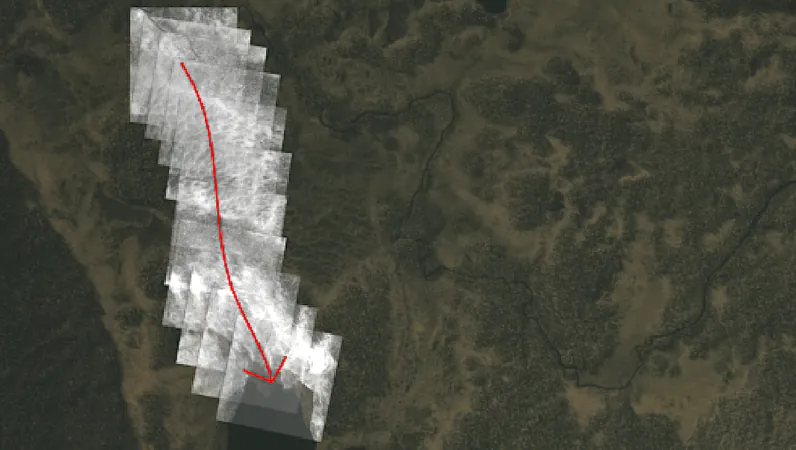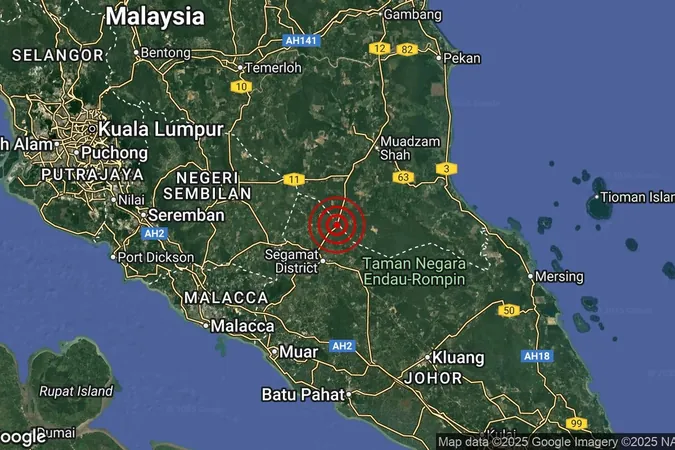
Revolutionizing Earth Observations from the Skies: The HEIMDAL Stratospheric Balloon Mission
2025-08-29
Author: Arjun
Unlocking the Potential of High Altitude Balloons
Imagine a revolutionary way to observe our planet—using Stratospheric High Altitude Balloons (HABs) soaring high above traditional aircraft but beneath orbiting satellites. Operating between 20 to 35 kilometers, these balloons present an unparalleled opportunity for remote sensing that can enhance the capabilities of both satellites and drones.
Hyperspectral Imaging: A Game Changer for Earth Observation
In a groundbreaking study, researchers are testing a new hyperspectral imaging system that captures near-video-rate images across narrow spectral bands from HAB platforms. This technology, known as Computed Tomography Imaging Spectroscopy (CTIS), is tailored to meet the unique challenges of the stratospheric environment and balloon movement.
First-of-its-Kind Test in the Stratosphere
The team’s innovative system was successfully put to the test during the HEIMDAL mission, a five-hour flight launched from Kiruna in October 2024 as part of the REXUS/BEXUS 34/35 campaign. Images were gathered not only in actual stratospheric conditions but also in simulations designed to replicate those conditions at Aarhus University’s Mars Simulation Laboratory.
Towards High-Quality Land Cover Classification
This pioneering experiment marks a significant step towards deploying HAB technology for precise land cover classifications, offering researchers and environmentalists a potent new tool for monitoring our planet’s health.
The Visionaries Behind the Mission
Conceived by a dynamic team including Mads Juul Ahlebæk, Albertino Antonio Almeida Bach, and others, the HEIMDAL mission is poised to make waves in the world of Earth observation. Their efforts aim to harness HABs’ unique positioning to deliver high spatial resolution data, bridging the gap between aerial and satellite imaging.
The Future of Remote Sensing Is Here!
As we look towards the future, the insights gained from this mission could transform how scientists observe and interact with our environment. With the HEIMDAL mission paving the way, the sky is no longer the limit—it's just the beginning!






 Brasil (PT)
Brasil (PT)
 Canada (EN)
Canada (EN)
 Chile (ES)
Chile (ES)
 Česko (CS)
Česko (CS)
 대한민국 (KO)
대한민국 (KO)
 España (ES)
España (ES)
 France (FR)
France (FR)
 Hong Kong (EN)
Hong Kong (EN)
 Italia (IT)
Italia (IT)
 日本 (JA)
日本 (JA)
 Magyarország (HU)
Magyarország (HU)
 Norge (NO)
Norge (NO)
 Polska (PL)
Polska (PL)
 Schweiz (DE)
Schweiz (DE)
 Singapore (EN)
Singapore (EN)
 Sverige (SV)
Sverige (SV)
 Suomi (FI)
Suomi (FI)
 Türkiye (TR)
Türkiye (TR)
 الإمارات العربية المتحدة (AR)
الإمارات العربية المتحدة (AR)